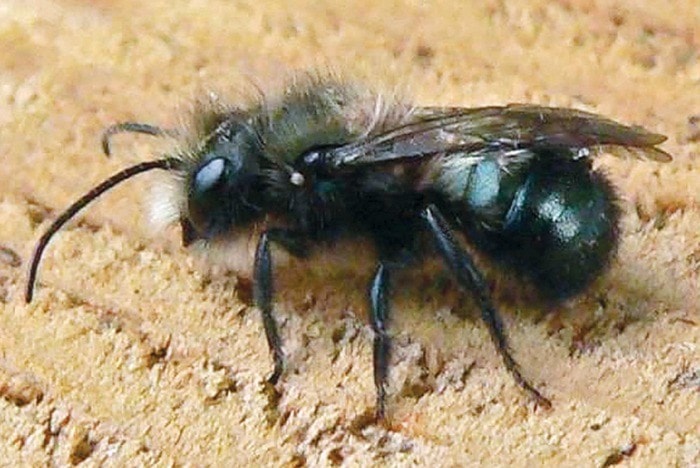Like the Rodney Dangerfields of the insect kingdom, bees might like more respect.
For thousands of years, wild (native) bees, through the pollination process, have indirectly provided people with plants for food and shelter.
Steve Mitchell of Cobble Hill’s Bee Haven Farm says when most people think “pollination” they envision “honey bees,” yet the species was only brought to North America some 350 years ago.
Native bees are solitary creatures that nest in natural crevices in the ground, under tree bark, or in beetle tunnels. Canada alone boasts about 800 species of native bees. Most popular of Vancouver Island’s 30 native bee species is the orchard Mason bee (Osmia lignaria), a small, stout, dark-bodied insect with a metallic blue-green sheen.
Mason bees far outwork honey bees, performing near-impossible labours in their short four to six-week lives. It’s estimated that one Mason bee pollinates 20 to 50 times more plants than honey bees.
However, in recent years, fully one-quarter of North America’s honey bees have been lost to colony collapse disorder, attributed to pollen mites, long-distance trucking, toxic pesticides and viruses. Consequently, native bees must now assume a larger role in pollination of fruit trees and berry shrubs.
Attracting native bees will improve garden yields, and planting early-flowering nectar sources, such as crocus and red-flowering currant, will encourage nesting and reproduction. Consider planting members of the aster family, including sunflowers, gaillardia, echinacea and phacelia, or aromatic herbs as bee attractants.
Local Mason bee aficionado Jim Dubois refers to these super-pollinators as “harmless, sweet and cuddly.” He’s even been bitten by the non-aggressive bee after accidentally squeezing one, but the sting, he says, amounted to “little more than a tingle.”
Mason bee houses will draw these gentle, beneficial pollinators to backyards. Wait until the weather warms in early March and a source of pollen appears. Then place the bee block in a dry south-east location, under an eave, at a “head-height” of 5-7 feet, and provide a source of mud for best results. Mason bees can only fly a maximum distance of 300 feet from their nests.
Mason Bee info-session: Sunday, March 20, Campbell River farmers’ market. Noon – 3 p.m.
E-mail Christine: wildernesswest@shaw.ca.
